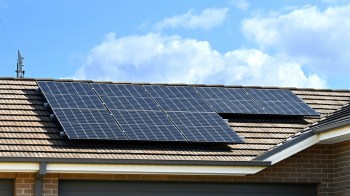Home insurance prices are rising, but some of those paying the most are not the most at risk. New data has revealed a distortion in the system for pricing home insurance in the United States, and it could cost you.
What's happening?
Historically, getting an up-close look at home insurance costs across the U.S. has been almost impossible because private insurers don't publicly disclose what they charge. Benjamin Keys, a professor of real estate at the University of Pennsylvania's Wharton School, and Philip Mulder, a professor at the University of Wisconsin School of Business, have found a workaround.
As detailed by the New York Times, the two researchers worked with CoreLogic, a property information and analytics company that collects data from mortgage servicers, to obtain data for over 12 million of America's nearly 80 million homes that the owners live in.
By deducting payments for mortgages, property tax, and other fees from escrow over a nearly 10-year period, they could estimate what each household paid for property insurance — and it isn't what many would call fair.
The Times reported that further recent research shows that homeowners in states where regulators look less closely at requests for rate increases are paying more than those in states where officials question the justifications and try to keep rates low.
"Families with the same level of risk exposure pay wildly different amounts to protect themselves from harm," Keys said. "Different prices for the same risk feels unfair."
Why is the inequality in insurance important?
As rising global temperatures bring more extreme weather events, the cost of home insurance will continue to rise. Some major companies are even canceling plans in some of the country's most at-risk areas.
However, the Times reported that some companies are disproportionately charging those in the middle of the country and parts of the Southeast far more than other homeowners with similar levels of risk.
Because of this, the home insurance market in the U.S. is increasingly distorted. In short, insurance companies may be charging homeowners in states with weaker rules more to offset lower rates paid by those in states with tougher rules.
It's causing owning a home to be unaffordable in areas where insurance rates exceed the actual risk and, conversely, leading people to buy homes in areas likely to be hit by wildfires or other disasters simply because insurance prices are low.
Ishita Sen, a professor of finance at Harvard Business School who studies why insurance rates diverge from risk, told the Times the market is "incentivizing all sorts of crazy behavior."
What can you do as a homeowner?
While you can't control a chaotic insurance market, you can find other ways to lower your bills and offset rising prices.
Electrifying your home, vehicle, and appliances is one of the best ways to save money and help the environment. Installing solar panels, switching to an electric vehicle, and even swapping out your polluting gas stove for an induction oven can go a long way in reducing your monthly bills.
The process can be overwhelming, but companies like Rewiring America have free tools to help homeowners navigate available tax incentives, find contractors, and make upgrading their homes easy on their minds, wallets, and the planet.
Join our free newsletter for easy tips to save more, waste less, and help yourself while helping the planet.










